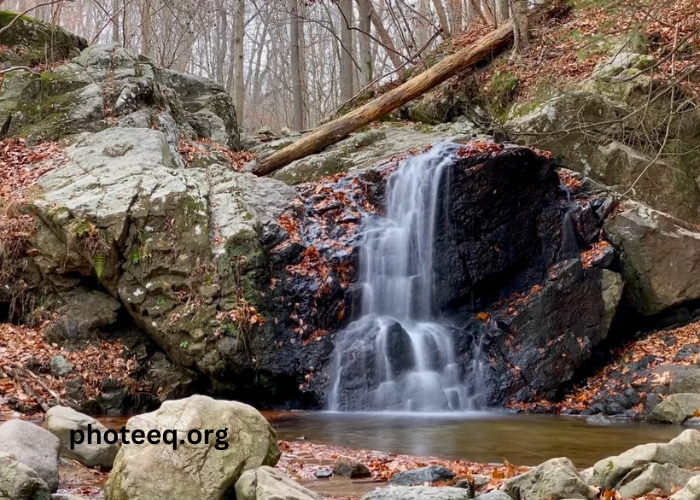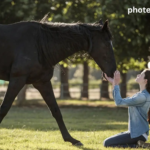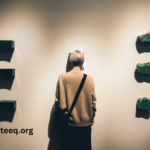As a photographer, I am always on the lookout for new tools and techniques that can help me push the boundaries of my creativity. One such tool that has caught my attention is Photeeq Multiple Exposure. This innovative feature allows photographers to create stunning multiple exposure photos with ease.
In this article, I will explore the creative possibilities of Photeeq Multiple Exposure, provide a step-by-step guide on how to use it, share some valuable tips for achieving amazing results, compare it with traditional multiple exposure techniques, delve into advanced techniques, troubleshoot common issues, and ultimately, highlight the endless creativity that can be achieved with Photeeq Multiple Exposure.
The Creative Possibilities of Photeeq Multiple Exposure
Photeeq Multiple Exposure opens up a world of artistic opportunities for photographers. Whether you are capturing landscapes, portraits, or abstract compositions, this feature allows you to combine multiple images into a single frame, resulting in a visually striking and unique photo. By overlaying different subjects, textures, and colors, you can create images that evoke a sense of mystery, depth, and complexity.
One of the key advantages of Photeeq Multiple Exposure is the ability to experiment and let your imagination run wild. You can blend images of contrasting elements, such as nature and architecture, to create surreal landscapes. You can also merge portraits with abstract patterns to produce intriguing and thought-provoking images. The possibilities are truly endless, and the only limit is your creativity.
How to Use Photeeq Multiple Exposure
Using Photeeq Multiple Exposure is a straightforward process that can be easily mastered with a bit of practice. Here is a step-by-step guide to help you get started:
- Activate the Multiple Exposure Mode: Access the settings menu on your camera, locate the Multiple Exposure option, and turn it on. It may be necessary to consult your camera’s user manual for specific instructions, as the process may vary depending on the model.
- Select the Number of Exposures: Choose the number of exposures you want to combine in a single frame. This will determine the complexity and visual impact of your final image. Start with a smaller number, such as two or three, and gradually increase as you become more comfortable with the technique.
- Compose Your First Shot: Take your first exposure, keeping in mind the composition and subject that you want to blend with subsequent shots. Pay attention to lighting, focus, and any other technical aspects that are important to you.
- Review and Overlay: After capturing your first exposure, review the image on your camera’s LCD screen. If you are satisfied with the result, proceed to take the next exposure. If not, make any necessary adjustments and try again.
- Repeat and Refine: Repeat the process of composing, reviewing, and overlaying until you have captured all the desired exposures. Experiment with different subjects, angles, and settings to achieve the desired effect.
- Finalize and Save: Once you have captured all the exposures, review the final image on your camera’s LCD screen. If you are happy with the result, save the image to your memory card. If not, you can delete it and start the process again.
Tips for Achieving Stunning Multiple Exposure Photos with Photeeq
While using Photeeq Multiple Exposure is relatively straightforward, here are some tips that can help you take your images to the next level:
- Plan Your Shots: Before you start capturing exposures, take some time to plan your shots. Think about the subjects, textures, and colors that you want to combine. Consider the mood and story you want to convey through your image. Planning ahead will help you create more cohesive and impactful compositions.
- Experiment with Exposure Values: Play with different exposure values for each shot. Varying the exposure can create interesting effects, such as emphasizing certain elements or creating a sense of motion. Don’t be afraid to underexpose or overexpose your shots to achieve the desired result.
- Pay Attention to Composition: Composition is key in multiple exposure photography. Pay attention to the placement of your subjects within the frame, the balance of elements, and the overall flow of the image. Use leading lines, symmetry, and the rule of thirds to create visually pleasing compositions.
- Use a Tripod: To ensure precise alignment of your exposures, use a tripod. This will help avoid any unintentional camera movement, resulting in sharper and more seamless blends. A remote shutter release can also be handy to further minimize camera shake.
- Experiment with Different Subjects: Don’t limit yourself to a single type of subject. Explore a variety of subjects, such as nature, architecture, people, or even mundane objects. Combining different subjects can create intriguing juxtapositions and unexpected visual narratives.
- Edit and Enhance: Once you have captured your multiple exposure image, don’t be afraid to edit and enhance it further. Use post-processing software to fine-tune the colors, contrast, and sharpness. Experiment with different filters and effects to add a personal touch to your creation.
Photeeq Multiple Exposure vs. Traditional Multiple Exposure Techniques
In the realm of multiple exposure photography, Photeeq Multiple Exposure brings a host of advantages over traditional techniques. Here are a few key points of comparison:
- Ease of Use: Photeeq Multiple Exposure simplifies the process of capturing multiple exposures by providing an intuitive interface and automated blending. Traditional techniques, on the other hand, require manual adjustments and precise alignment, which can be time-consuming and challenging.
- Real-Time Preview: With Photeeq Multiple Exposure, you can review and overlay images in real-time, allowing you to make immediate adjustments and refine your composition. Traditional techniques often involve guesswork and trial-and-error, as you cannot see the final result until after the exposures are developed.
- Flexibility and Control: Photeeq Multiple Exposure offers greater flexibility in terms of the number of exposures and the ability to adjust exposure values for each shot. Traditional techniques are often limited to double exposures and require careful planning and coordination to achieve the desired effect.
- Image Quality: Photeeq Multiple Exposure leverages the advanced technology of modern cameras, resulting in high-quality images with minimal noise and artifacts. Traditional multiple exposure techniques, especially those involving film cameras, may suffer from technical limitations, such as graininess and loss of detail.
Advanced Techniques for Using Photeeq Multiple Exposure
Once you have mastered the basics of Photeeq Multiple Exposure, you can further expand your creative horizons by exploring advanced techniques. Here are a few ideas to get you started:
- Long Exposures and Light Painting: Combine Photeeq Multiple Exposure with long exposures and light painting techniques to create mesmerizing images. Use a tripod to capture the base exposure and then introduce light sources, such as flashlights or glow sticks, in subsequent exposures to paint with light.
- Double Exposure Portraits: Experiment with double exposure portraits by blending a portrait with another image or texture. This technique can result in ethereal and dreamlike portraits that evoke emotion and tell a story.
- Multiple Exposure Panoramas: Capture multiple exposures of a panoramic scene and blend them together to create a seamless and immersive panorama. This technique can add depth and a sense of grandeur to your landscape photography.
- In-Camera Multiple Exposure Collages: Instead of relying on post-processing software, challenge yourself to create elaborate multiple exposure collages entirely in-camera. This requires careful planning and precise composition to create a cohesive and visually engaging image.
Troubleshooting Common Issues with Photeeq Multiple Exposure
While Photeeq Multiple Exposure is a powerful tool, it can sometimes present challenges. Here are some common issues you may encounter and how to troubleshoot them:
- Blown-out Highlights: If your multiple exposure image has areas with overexposed highlights, try reducing the exposure values for subsequent shots. This will help balance the exposure and retain detail in the highlights.
- Unwanted Ghosting: Ghosting occurs when the subjects in your multiple exposure image appear transparent or blurry due to movement between exposures. To minimize ghosting, use a tripod to ensure precise alignment and ask your subjects to remain as still as possible.
- Uneven Blending: If your multiple exposure image has areas with uneven blending, it may be due to differences in exposure values or lighting conditions. To address this, ensure consistent exposure values and lighting between shots, or consider using post-processing software to blend the exposures manually.
- Lack of Sharpness: If your multiple exposure image appears soft or lacking in sharpness, make sure your camera is set to a fast enough shutter speed to freeze any movement. Additionally, using a tripod and remote shutter release will minimize camera shake and help maintain sharpness.
Conclusion
In conclusion, Photeeq Multiple Exposure is a powerful feature that unlocks a world of creative possibilities for photographers. From blending different subjects to experimenting with exposure values, this technique allows you to create visually striking and unique images. Whether you are a seasoned professional or an enthusiastic beginner, Photeeq Multiple Exposure offers an accessible and intuitive way to explore the art of multiple exposures.
By following the step-by-step guide, applying the tips and techniques shared in this article, and embracing the endless possibilities of Photeeq Multiple Exposure, you can take your photography to new heights. So grab your camera, unleash your imagination, and embark on a journey of boundless creativity with Photeeq Multiple Exposure. The results will be nothing short of breathtaking.





